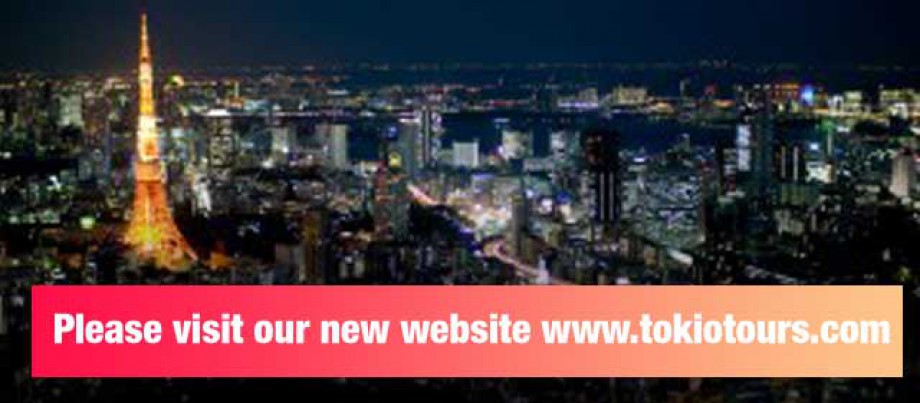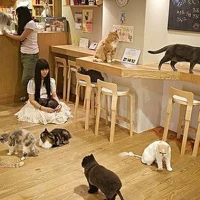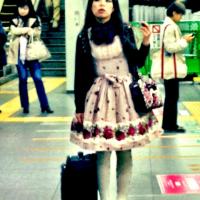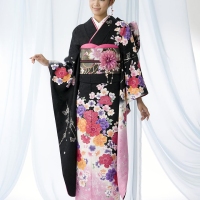
Burakumin (部落民, “hamlet people”/”village people”) is an outcaste group at the bottom of the Japanese social order that has historically been the victim of severe discrimination and ostracism. They were originally members of outcaste communities in the Japanese feudal era, composed of those with occupations considered impure or tainted by death (such as executioners, undertakers, workers in slaughterhouses, butchers or tanners), which have severe social stigmas of kegare (穢れ or “defilement”) attached to them or people who had been taken prisoner in one of the many wars waged throughout Japan. Traditionally, the Burakumin lived in their own hamlets or ghettos. This minority group accounts for less than 2% of the population.
The reason other people looked down on others who worked as butchers or tanners is because of buddhism. According to the buddhist faith you should not be involved in the taking of an animals life, which accounts for the strong prejudice agains people working in these trades, especially in a feudal society dominated by the military elite.
The social status and typical occupations of outcaste communities have varied considerably according to region and over time. A burakumin neighborhood within metropolitan Tokyo was the last to be served by streetcar and is the site of butcher and leather shops to this day.

Burakumin villages near Tokyo or Edo as it was formally known
During the Edo period
At the start of the Edo period (1603–1867), the social class system was officially established as a means of designating hierarchy, and eta were placed at the lowest level, outside of the four main divisions of society. Like the rest of the population, they were bound by sumptuary laws based on the inheritance of their social class. The eta lived in segregated settlements, and were generally avoided by the rest of Japanese society.
When dealing with members of other castes, they were expected to display signs of subservience, such as the removal of headwear. In an 1859 court case described by author Shimazaki Toson, a magistrate declared that “An eta is worth 1/7 of an ordinary person.”
Historically, eta were not liable for taxation in feudal times, including the Tokugawa period, because the taxation system was based on rice yields, which they were not permitted to possess. Some outcasts were also called kawaramono (河原者, “dried-up riverbed people”) because they lived along river banks that could not be turned into rice fields.
Since the taboo status of the work they performed afforded them an effective monopoly in their trades, some succeeded economically and even occasionally obtained samurai status through marrying or the outright purchase of troubled houses. Some historians point out that such exclusive rights originated in ancient times, granted by shrines, temples, kuge, or the imperial court, which held authority before the Shogunate system was established.

The end of the feudal era
The feudal caste system in Japan ended in 1869 with the Meiji restoration. In 1871, the newly formed Meiji government issued a decree called Kaihōrei (解放令 Emancipation Edict) giving outcasts equal legal status. (This terminology is not the original, but a later revision. Originally, it was labeled Senmin Haishirei (賤民廃止令 Edict Abolishing Ignoble Classes.) However, the elimination of their economic monopolies over certain occupations actually led to a decline in their general living standards, while social discrimination simply continued. For example, the ban on consumption of meat from livestock was lifted in 1871 in order to “westernise” the country, and many former eta moved on to work in abattoirs and as butchers.
However, slow-changing social attitudes, especially in the countryside, meant that abattoirs and workers were met with hostility from local residents. Continued ostracism as well as the decline in living standards led to former eta communities turning into slum areas.
There were many terms used to indicate former outcastes, their communities or settlements at the time. Official documents at the time referred to them askyu-eta (旧穢多 “former eta”), while the newly liberated outcasts called themselves shin-heimin (新平民”new citizens”), among other things.
The term tokushu buraku (特殊部落 “special hamlets”, now considered inappropriate) started being used by officials in 1900s, leading to the meaning of the word buraku (“hamlet”) coming to imply former eta villages in certain parts of Japan.
Movements to resolve the problem in the early 20th century were divided into two camps: the “assimilation” (同和 dōwa) movement which encouraged improvements in living standards of buraku communities and integration with the mainstream Japanese society, and the “levellers” (水平社 suiheisha) movement which concentrated on confronting and criticising alleged perpetrators of discrimination.

Social discrimination
Cases of social discrimination against residents of buraku areas is still an issue in certain regions. Outside of the Kansai region, people in general are often not even aware of the issue, and if they are, usually only as part of feudal history. Due to the taboo nature of the topic it is rarely covered by the media, and people from eastern Japan, for example, are often shocked when they learn that it is a continuing issue.
The prejudice most often manifests itself in the form of marriage discrimination, and less often, in employment. Traditionalist families have been known to check on the backgrounds of potential in-laws to identify people of buraku background. These checks are now illegal, and marriage discrimination is diminishing; Nadamoto Masahisa of the Buraku History Institute estimates that between 60 and 80% of burakumin marry a non-burakumin, whereas for people in their sixties, the rate was 10%.
Cases of continuing social discrimination are known to occur mainly in western Japan, particularly in the Osaka, Kyoto, Hyogo, and Hiroshima regions, where many people, especially the older generation, stereotype buraku residents (whatever their ancestry) and associate them with squalor, unemployment and criminality.

Members of the Yakuza (Japanese maffia)
According to David E. Kaplan and Alec Dubro in Yakuza: The Explosive Account of Japan’s Criminal Underworld (Reading, Massachusetts: Addison-Wesley Publishing Co., 1986), burakumin account for about 70 percent of the members of Yamaguchi-gumi, the biggest yakuza syndicate in Japan.
Mitsuhiro Suganuma, the ex-member of Public Security Intelligence Agency, testified that burakumin account for about 60 percent of the members of the entire yakuza.
“Black book” citing information of Burakumin published world wide
In November 1975, the Osaka branch of the Buraku Liberation League was tipped off about the existence of a book called “A Comprehensive List of Buraku Area Names” (特殊部落地名総鑑Tokushu Buraku Chimei Sōkan). Investigations revealed that copies of the hand-written 330-page book were being secretly sold by an Osaka-based firm to numerous firms and individuals throughout Japan by a mail order service called Cablenet, at between ¥5,000 and ¥50,000 per copy. The book contained a nationwide list of all the names and locations of buraku settlements (as well as the primary means of employment of their inhabitants), which could be compared against people’s addresses to determine if they were buraku residents. The preface contained the following message: “At this time, we have decided to go against public opinion and create this book [for] personnel managers grappling with employment issues, and families pained by problems with their children’s marriages.”
More than 200 large Japanese firms, including (according to the Buraku Liberation and Human Rights Research Centre of Osaka) Toyota, Nissan, Honda and Daihatsu, along with thousands of individuals purchased copies of the book. In 1985, partially in response to the popularity of this book, and an increase in mimoto chōsa (身元調査, private investigation into one’s background) the Osaka prefectural government introduced “An Ordinance to Regulate Personal Background Investigation Conducive to Buraku Discrimination”.
Although the production and sale of the book has been banned, numerous copies of it are still in existence, and in 1997, an Osaka private investigation firm was the first to be charged with violation of the 1985 statute for using the text.
Famous Burakumin
Some Burakumin did manage to fight their way to the top and were actually quite successful in doing so, regardless of their back ground. Here is a list of some of the people that made it to the top.
- Tōru Hashimoto, politician, lawyer, the 52nd Governor of Osaka Prefecture, and current Mayor of Osaka city
- Ai Kago, singer, actress
- Jiichirō Matsumoto, politician and businessman who was called the “buraku liberation father”
- Ryu Matsumoto, politician of the Democratic Party of Japan, a member of the House of Representatives in the Diet (national legislature)
- Toru Matsuoka, politician of the Democratic Party of Japan, a member of the House of Councillors in the Diet (national legislature)
- Nahomi Matsushima, comedian
- Manabu Miyazaki, writer, social critic and public figure known for his underworld ties
- Kenji Nakagami, writer, critic, and poet
- Mineko Nishikawa, actress and Enka singer
- Hiromu Nonaka, chief cabinet secretary (1998–1999)
- Takashi Tanihata, politician serving in the House of Representatives in the Diet (national legislature) as a member of the Liberal Democratic Party
- Tadao Yoshida, founder of the YKK Group





















































































